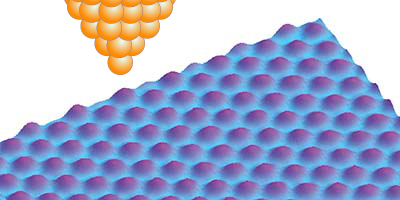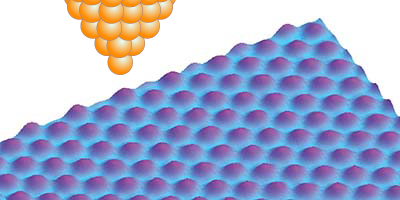Molecular Rotations Now Seen on Surfaces
Studying one or a few layers of atoms or molecules on a substrate is a difficult business: signals are weak and there is always the possibility that the particles could blow away. Surface scientists have successfully overcome these challenges to measure energy levels of vibrational modes of individual molecules on surfaces, but rotational states have remained out of reach. Fabian Natterer and colleagues from Ecole Polytechnique Federale de Lausanne (EPFL) now report their success observing them in Physical Review Letters. Using scanning tunneling microscopy (STM), they have detected differences in rotational states of different isotopic forms of molecular hydrogen. And because they can identify the nuclear spin state of a molecule, the method greatly expands the capability of atomic scale surface analysis.
The EPFL team studied monolayers of molecular hydrogen ( ) and its isotopic forms and on a nickel substrate insulated by a coating of boron nitride or graphene. When they scanned the surface with a STM tip they observed sharp changes in conductance that corresponded to rotational energy levels in the molecule. In addition, the researchers could identify nuclear spin isomers: the so-called ortho (spins antiparallel) and para (spins parallel) forms of molecule hydrogen, which have different energy levels.
The authors expect their STM rotational spectroscopic method to be useful in studying other diatomic molecules such as nitrogen and oxygen, and perhaps polyatomic species such as methane and ammonia. By complementing the powerful techniques of inelastic electron tunneling spectroscopy, the STM approach offers a broad toolkit for the study of chemical, electronic, magnetic, mechanic, and nuclear aspects of surfaces and adsorbates. This latest addition could potentially advance the field by investigating nuclear processes with unprecedented spatial resolution. – David Voss





